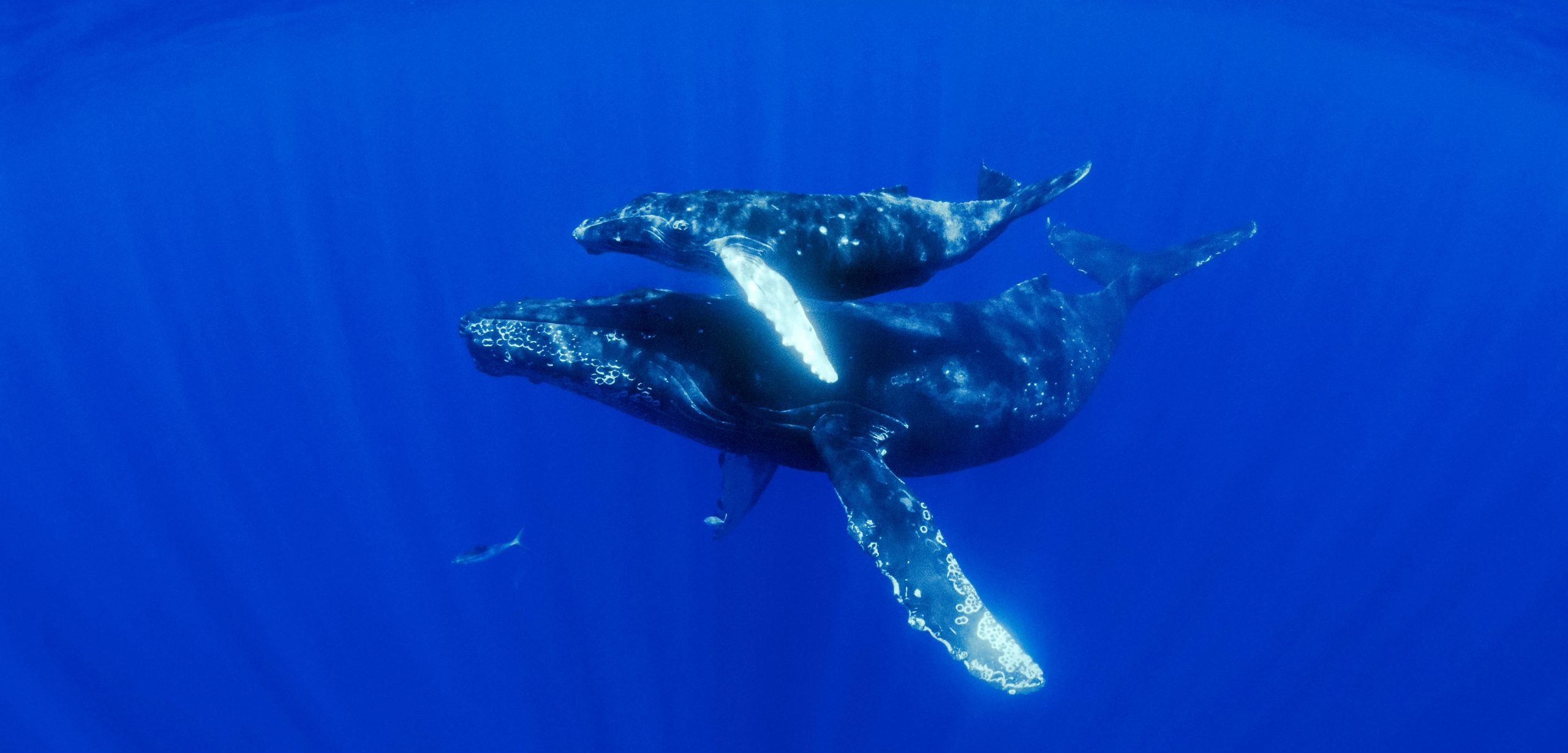No-Show Pacific Ocean Humpbacks Stump Scientists
In winter breeding grounds like Hawai‘i and Mexico, migrating humpback whales arrived later, left earlier, and showed up in fewer numbers than normal.
Article body copy
Each fall, Pacific Ocean humpback whales migrate from their summer feeding grounds near Alaska and Russia to the warm waters further south. In these places, the whales spend their winters finding mates, breeding, and giving birth to and rearing calves conceived the previous winter. Or, they normally do. This past winter, the whales, by and large, failed to show up.
Whale researchers from around the Pacific are reporting that far fewer whales showed up in their usual wintering grounds than normal. Those that did make it arrived later, departed earlier, and appeared to be far less active than usual, spending less time at the surface and making longer dives.
Ed Lyman, a researcher with the Hawaiian Islands Humpback Whale National Marine Sanctuary on the island of Maui, says he started noticing changes in December 2015. “It did seem that the whales were arriving later, and what tipped us off more than anything was the tourism industry,” he says. Lyman, who works closely with the industry to spot entangled and distressed whales, was getting calls from tour boat operators asking where the whales were.
“Something happened this year,” agrees Jim Darling, a researcher with the nonprofit Whale Trust Maui. “It almost seemed as if the females didn’t bother to show up, which left the males without much to do.” Darling says the overall density of whales off Maui appeared to be down, but the density of cows and calves was especially low, and there was much less surface activity than usual. Darling also reported hearing from colleagues in the Philippines and Japan of similarly low whale numbers in those places.
Although comprehensive surveys of whale populations in Hawai‘i are limited, the data that are available indicate numbers were indeed down. A six-week survey off the Island of Hawai‘i in peak season this year counted 225 humpbacks. That compares to about 700 whales in the same survey done in 2010. Also striking was the low number of calves. Only eight percent of whale groups included a calf this year, compared to 33 percent in a normal year, says Chris Gabriele, a researcher with the non profit Hawaii Marine Mammal Consortium.
Puerto Vallarta, Mexico, also saw fewer whales than normal says Oscar Frey, an oceanographer and the chief researcher for the nonprofit Deep Blue Conservancy. “Normally, we see more than 1,000 humpbacks in a season, and this year we saw less than 400. The count was 378.” Frey adds that he observed “the least number of mothers with babies that I have ever seen.”
The whales that went to Puerto Vallarta also tended to stay farther offshore, and exhibited some unusual behaviors, such as making much longer dives. Whales that would typically spend a half hour below the surface stayed submerged much longer. “I documented 64-minute dives more than once,” Frey says.
So if the whales weren’t in Hawai‘i, Mexico, and other warm wintering grounds, where were they? It’s possible they simply decided to stay in Alaska. John Moran, a research fisheries biologist with the US National Oceanic and Atmospheric Administration’s Auke Bay Laboratories in Juneau, confirmed that humpbacks seemed to be lingering in Alaska later in the fall than usual, and he observed more in the winter months than he expected. But, he says, data are lacking. While his group has done winter surveys of Prince William Sound humpbacks in previous years, they lacked funding to do so this year. “Of course, that’s when something happens,” he says.
The researchers say it’s too soon to know what’s behind the whale weirdness, though both Darling and Frey pointed to this year’s El Niño—one of the strongest on record—as a probable contributing factor.
Though the whale experts agree that the strange migration may be a one-time anomaly, they suggest it’s definitely something to keep an eye on. Lyman, Gabriele, and Moran all say they plan to step up efforts to gather more and better data in the coming year to better assess what’s going on. “At the very least, we should be attentive,” Darling says. “I don’t think anybody’s suggesting alarm. Anything can happen in one year, especially an El Niño year.”

